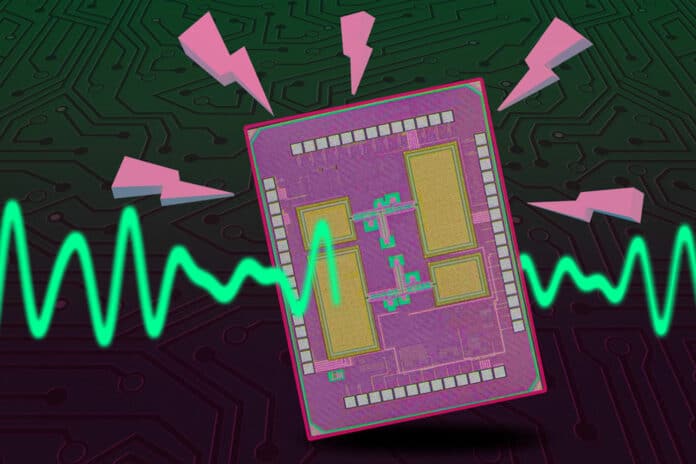The Internet of Things (IoT) is growing at an unprecedented pace. And scientists are striving to make them smaller in the form of, for example, sensors. Because the batteries in these tiny sensors are so small and frequently practically difficult to replace, developers included wake-up receivers into the devices to keep them in low-power “sleep” mode when not in use. This prolongs battery life.
A new wake-up receiver created by scientists at MIT is less than one-tenth the size of earlier models and uses just a few microwatts of power. Additionally, its receiver has a low-power, integrated authentication system that protects it from a specific assault type that might quickly deplete its battery.
Scientists developed this wake-up receiver using terahertz waves. Their chip is at most 1 square millimeter in size. Using their receiver, they demonstrated effective wireless communication with a signal source several meters away. This shows a range that would enable their chip to be used in miniaturized sensors.
Eunseok Lee, an electrical engineering and computer science (EECS) graduate student and lead author of a paper on the wake-up receiver, said, “By using terahertz frequencies, we can make an antenna that is only a few hundred micrometers on each side, which is a very small size. This means we can integrate these antennas into the chip, creating a fully integrated solution. Ultimately, this enabled us to build a tiny wake-up receiver that could be attached to tiny sensors or radios.”
Terahertz waves have very high frequencies and travel much faster than radio waves. They travel in a directed path which makes them more secure. However, due to their high frequencies, terahertz receivers often multiply the terahertz signal by another signal to alter the frequency. This frequency is called frequency mixing modulation.
Scientists instead developed a zero-power-consumption detector that can detect terahertz waves without the need for frequency mixing. The detector uses a pair of tiny transistors as antennas, which consume very little power.
Their wake-up receiver was only 1.54 square millimeters in size and used less than three microwatts of power, even with both antennae on the chip. This dual-antenna configuration maximizes performance and facilitates signal reading.
Their technology receives a terahertz signal, amplifies it, and then transforms analog information into a digital signal for processing. A token, which is a series of bits (0s and 1s), is carried by this digital signal. The device will turn on if the token matches the wake-up receiver’s token.
Lee said, “With a wake-up receiver, the lifetime of a device could be improved from one day to one month, for instance, but an attacker could use a denial-of-sleep attack to drain that entire battery life in even less than a day. That is why we put authentication into our wake-up receiver.”
They introduced an authentication block that uses a shared key with trusted senders and a mechanism to generate the device’s token each time randomly. If a sender knows the password, they can send a signal with the appropriate token. This key functions similarly to a password. To ensure that the authentication procedure only uses a few additional nanowatts of electricity, the researchers use a method known as lightweight cryptography.
As the distance between the chip and the terahertz source grew, they sent terahertz signals to the wake-up receiver to test their new device. By doing this, they evaluated the receiver’s sensitivity, or the lowest signal strength required for a signal to be detected by the device. Longer-distance signals have lower power.
Lee said, “We achieved 5- to 10-meter longer distance demonstrations than others, using a device with a very small size and microwatt level power consumption.”
Terahertz radiation must, however, precisely hit the detector to be most effective. Some of the signals will be lost if the chip is angled. To properly direct the terahertz radiation, scientists linked their device with a terahertz beam-steerable array. This method allowed communication to be sent to several chips with little signal loss.
Scientists are now looking forward to tackling this problem of signal degradation. Finding a way could increase the performance of these devices.
